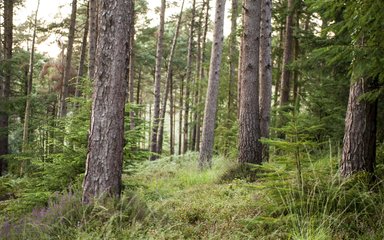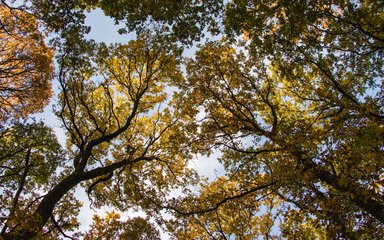To celebrate our centenary, we teamed up with multi-award winning designer Sarah Eberle to create a garden for the RHS Chelsea Flower Show in 2019. We went to find out a bit more about Sarah, and her motivations for working with us on this theme.

What is the garden all about?
The Resilience Garden is about demonstrating how we can develop our forests, gardens and landscapes to be resilient in times of change.
The changing climate – and threats posed by pests and diseases – means we have to be innovative when it comes to planting different species. As long as we’re following watertight biosecurity protocols, we can be experimental and inventive in our planting. This will ensure our landscapes are healthy for nature, and for future generations to enjoy.
I’ve visited Westonbirt Arboretum and Bedgebury Pinetum, to speak with Forestry England experts about planting for the future. We’ve discussed their research and the variety of opportunities – there’s a great deal of excitement about the potential.
Where does your inspiration come from?
This garden is inspired by pioneering Victorian gardener William Robinson and his concept of the wild garden. Robinson enjoyed experimenting with different plant and tree species, which although more common these days, was revolutionary for the time.
He also advocated for less formulaic planting, and more freedom for gardens to embed into the landscape around them. While I’m not trying to imitate Robinson with this garden, his ideas and principles have certainly provided me with inspiration.


Why did you decide to work with Forestry England on this project?
The centenary is a once in a lifetime opportunity to address some of the biggest challenges facing our forests, landscapes, plants and trees.
I feel very strongly about climate change, and our impact on the environment, and so it feels right to use the centenary as a platform to bring these issues the attention they deserve.
Forestry England, Forestry Commission, and it's research division, are already doing some fantastic work to ensure we have healthy landscapes for years to come. I’m delighted to be working with them on such an important project, which will contribute towards creating a vision for the next 100 years.
How would you like people to react to the garden?
More than anything, I’d like to see this garden impress people, inspire debate, and spur them into action. By working together we can address the big issues of our time, including climate change, and pave the way for a brighter future.
Everybody can take positive action to ensure our landscapes, countryside, parks and gardens flourish for generations to come.


How is British gardening changing in the face of climate change?
It’s difficult to speak generally as there are so many variables. However, I’ve seen many gardeners begin to plant a greater diversity of species, to cope with changing climatic conditions and protect their gardens from pests and diseases.
I might also suggest that neat, green lawns may become harder to maintain but that’s not necessarily a bad thing. As championed by Robinson, a wild garden is much more beneficial for wildlife, especially pollinators and other insects, some of which are facing uncertain futures.

